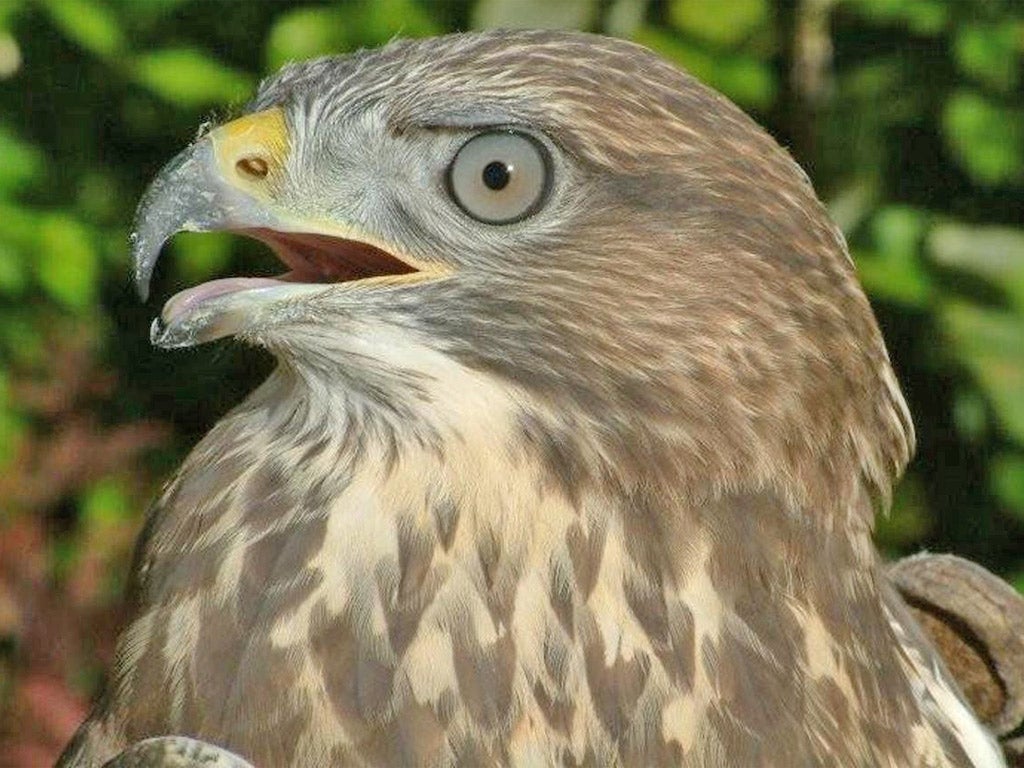Buzzard shooting licence issued to landowner, sparking fears hen harriers and peregrine falcons will be next
Campaigners fear post-Brexit bonfire of laws that protect endangered species

A licence to kill buzzards – a protected species that was hunted to extinction in many parts of Britain in the 19th century -- has been issued by Natural England to “prevent serious damage” to young pheasants bred for sport shooting.
The decision was condemned by environmental groups, with one ecologist expressing the fear that the decision could be the first of many undermining wildlife protections following the vote to leave the European Union.
Campaigners had already predicted a “bonfire” of environmental regulations in the wakes of the Brexit referendum result in June. The European Union is widely recognised as having some of the strongest environmental laws in the world.
In a statement on its website, Natural England said a licence had been issued “permitting the control of up to 10 buzzards to prevent serious damage to young pheasants”. The identity of the landowner granted the licence was not released.
“The licence is time-limited with stringent conditions and is based on the law, policy and best available evidence. It follows rigorous assessment after other methods had been tried unsuccessfully over a 5-year period,” the Government agency said.
“It is stipulated that the licence must be used in combination with non-lethal measures and only on buzzards in and immediately around the animal pens – not on passing birds.”
However Martin Harper, the conservation director of the RSPB, wrote in a blog post that the killing of a “recovering British bird of prey to protect an introduced gamebird for the benefit of commercial interest is wrong”.
“The decision sets a worrying precedent. What will be next? Red kites, peregrines, hen harriers?” he said.
“There needs to be a public policy debate about how can it be right that as a growing number of gamebirds are released, a protected bird of prey is in the firing line to safeguard a shootable surplus of pheasants.
“Forty five million pheasants and six million red-legged partridge are released into the countryside each year. We don’t know what the ecological consequences of this introduction are but it’s hardly surprising that it attracts predators.
“The loss of some of these gamebirds is an inevitable consequence of doing business. Natural predators should not be bearing the cost in this instance. What we really need is the gamekeeping industry to identify ways in which they can live alongside buzzards and invest in protecting their poults without resorting the lethal control.”
Stephen Heath, a freelance ecologist based in Oxford, said he feared that wildlife protections were being reduced, partly because of the prospect of leaving the European Union, which would potentially mean the UK was no longer subject to laws designed to conserve threatened species.
“Post Brexit, will these laws be deleted, will they be completely overlooked from now on? Are we going to have to rely on a Government that is pro-hunting, pro-landowner to protect our wildlife?” he said.
“It just worries me, and thousands of people like me, that this is the thin end of the wedge. It was the EU framework which actually protected these species.”
He said buzzards tended to eat rabbits and other small mammals, rather than young birds.
And campaign group Raptor Persecution UK pointed out that many gamebirds were not native to the UK.
“The buzzard is a native, protected species, still recovering in some areas from decades of illegal persecution,” it wrote.
“We also know that the game-shooting industry relies on criminality – the illegal killing of raptors – in order to provide for excessively large numbers of gamebirds to be shot. For fun.”
The National Gamekeepers’ Organisation said in a statement that buzzards were “now very common and widespread” with an estimated 300,000 individual birds.
“Their numbers are increasing faster than virtually any other British bird. Like all wild birds, they are protected by law but can also be controlled under licence for certain well-defined purposes. They have, for example, been shot at UK airports for many years,” it said.
“The law has allowed for licences like this since 1981 and Natural England, the Government's licensing authority, issues hundreds of licences every year for a wide range of species, many of them much less common than the buzzard. Natural England is not allowed to issue any licence that would harm the conservation status of the bird concerned.
“The purposes for which licences can be granted are also set out in law and include the prevention of serious damage to livestock, including gamebirds. Sometimes buzzards can key in on young pheasants, resulting in multiple deaths and injuries.
“In cases where this behaviour becomes habitual, the economic damage caused to the gamekeepers and others whose livelihood depends on game shooting can be severe.”
Join our commenting forum
Join thought-provoking conversations, follow other Independent readers and see their replies
Comments
Bookmark popover
Removed from bookmarks